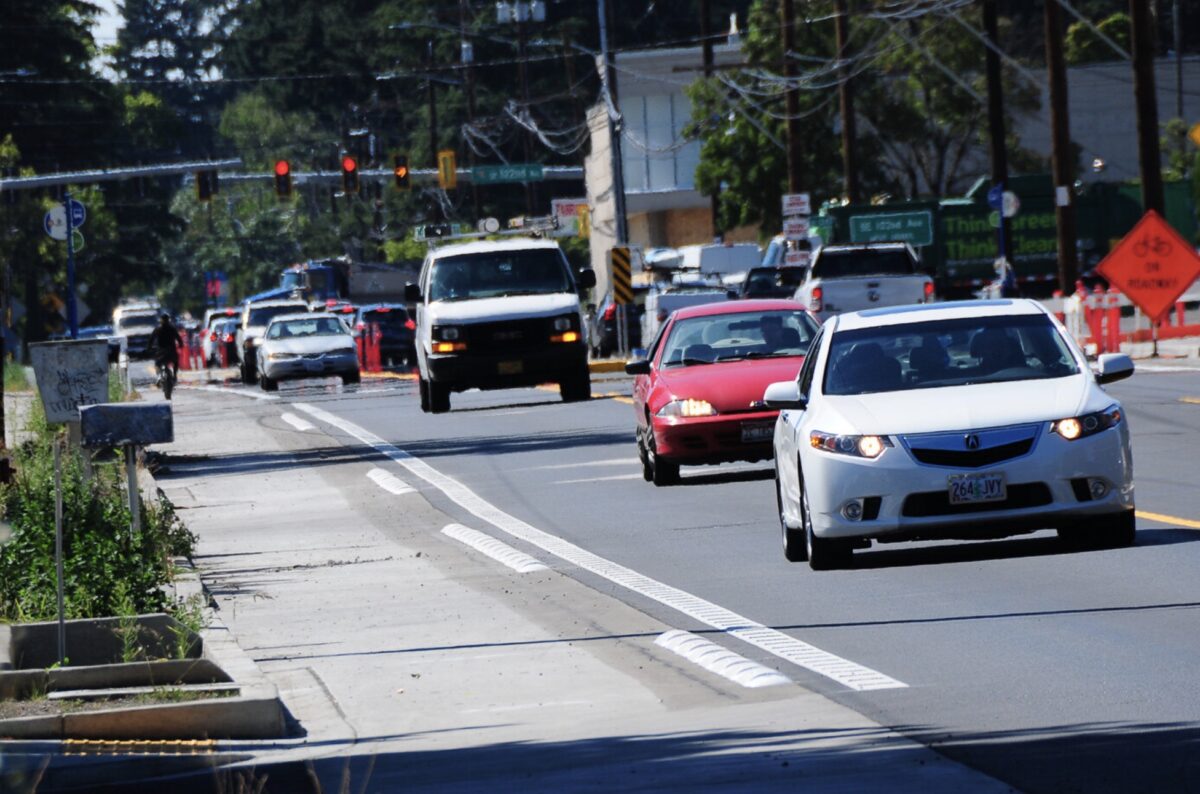
(Photo: Jonathan Maus/BikePortland)
New guidance from the U.S. Department of Transportation has sent a clear signal to states: Spend more “highway safety” money on projects that protect people who are not driving.
The Biden infrastructure plan infused the Federal Highway Administration’s Highway Safety Improvement Program (HSIP) with extra funding – it will have a budget of about $4 billion more in the next four years than it did from 2016-2020.
According to the FHWA press release, the guidance “ensures that the new funds are used strategically to make travel safer, including protecting people outside of vehicles, such as people walking, biking, or using mobility assistive devices, thereby reducing the number of lives lost on the nation’s highways, bridges, and roads.”
The Vulnerable Road User Safety Special Rule is a notable part of these new guidelines. This rule requires states to dedicate at least 15% of its HSIP funds to projects that address the safety of those road users if these vulnerable road users make up 15 percent or more of the total number of traffic fatalities in a state in a given year.
Given the sad state of traffic fatalities in Portland that are mirrored in a 2021 statewide death toll that was the highest in 30 years, we wondered how — or if — the new federal guidance will impact Oregon.
Advertisement


According to Oregon Department of Transportation Assistant Communications Director Katherine Benenati, the state doesn’t know exactly what it will be required to do as a result of the new rule.
ODOT reports that people who died in traffic crashes while walking or riding a bike have consistently made up around 20% of Oregon’s total traffic fatalities since 2015. 40% of these took place in the Portland metro area. So, it looks like the federal funding threshold will have been met.
However, the state may already be meeting this funding requirement through existing programs.
Right now, federal safety funds in Oregon are distributed through the All Roads Transportation Safety (ARTS) Program, which the IIJA act gives Oregon another $40 million for.
Benenati says that at least 7.5% of ARTS funding goes to safety improvements for people who walk and bike, but the agency actually funds more than that.
“More than a quarter of all applications being scoped in this round of ARTS include countermeasures that improve pedestrian and bicycle safety statewide, so we are confident that we will meet the 15% bike/ped project obligation for the next STIP cycle as we typically identify that much bike/ped spending through our normal process,” Benenati says.
ODOT has other programs dedicated to funding safety improvements for people who walk or bike, and the transportation department’s Transportation Safety Action Plan (TSAP), which was updated last October, acknowledges the efforts needed to protect vulnerable road users.
But many local, state and federal efforts to prevent traffic fatalities, especially among vulnerable people, haven’t demonstrated success as these incidents continue to rise. However, with more funding programs like this for safety improvements for people who bike and walk, as well as the attention U.S. Transportation Secretary Pete Buttigieg has given to the problem, we hope that America is on a better path to preventing the needless deaths we’re currently seeing all over the country.

